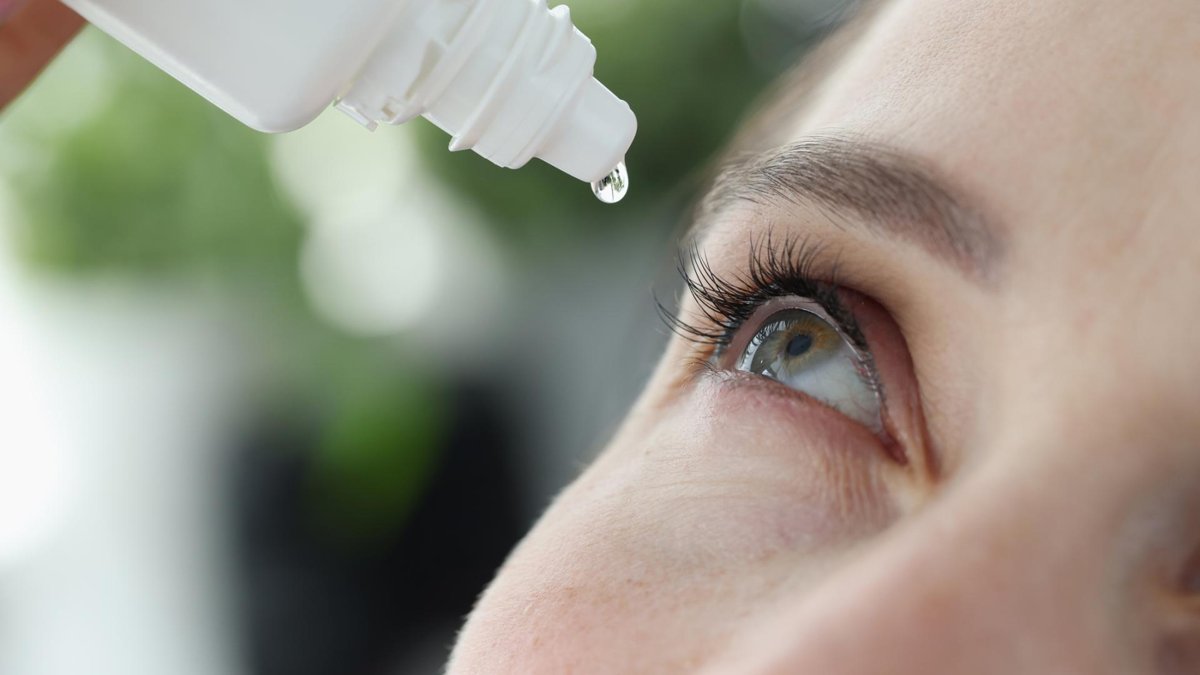
If you use artificial tears for dryness or irritation, you already know they can provide instant relief — but the comfort rarely lasts. Traditional drops evaporate quickly, often requiring frequent re-application.
That’s changing fast. New breakthroughs in ophthalmic materials and bio-responsive polymers are giving rise to the next generation of eye drops — ones that adapt in real time to your environment and your eye’s chemistry.
At Evolutionary Eye Care, we’re watching this field closely because it could redefine how we manage dry-eye disease in the next decade.
What Are “Smart” Artificial Tears?
Unlike standard lubricating drops, smart artificial tears use responsive molecules that sense your eye’s moisture levels, pH, and temperature.
When the surface of the eye starts to dry, these molecules thicken slightly to hold water longer — then return to a lighter consistency once normal hydration is restored.
This means fewer applications and sustained comfort throughout the day.
Some formulations even mimic the natural tear film, releasing electrolytes and lipids in layers, just like your body does.
The Science Behind Responsive Eye Drops
Researchers are designing these advanced lubricants using:
Hydrogels that swell when the eye loses moisture.
Nanoparticles that slowly release lubricants or anti-inflammatory agents.
Temperature-sensitive polymers that gel at body temperature but stay liquid in the bottle.
Together, they make drops that stay longer on the eye and reduce tear evaporation — a huge advancement for people suffering from chronic dry-eye syndrome or screen-related dryness.
Beyond Lubrication: Drops That Deliver Treatment
Some smart tears go further than hydration.
They can act as drug-delivery systems, releasing medications like cyclosporine or antihistamines directly onto the ocular surface over time.
This approach could replace multiple daily doses with a single, longer-lasting application — improving both comfort and compliance.
Environmental Adaptation: Drops That “Think”
Researchers are even exploring tears that adapt to humidity, temperature, and blinking frequency.
For instance, on a dry airplane cabin or windy day, these drops could thicken automatically to retain moisture longer, then thin out in humid conditions.
This represents the first step toward truly intelligent eye care.
Who Will Benefit Most
Smart artificial tears may be ideal for:
✅ Chronic dry-eye sufferers
✅ Contact-lens wearers
✅ Post-LASIK or cataract surgery patients
✅ Office workers and frequent travelers
✅ People living in dry or windy climates
At Evolutionary Eye Care, we anticipate these innovations will help reduce dependency on hourly drop use and improve long-term ocular-surface health.
When to Expect Smart Drops in Clinics
Several biotech companies are already conducting clinical trials, and some products could reach the market within the next two to three years.
As always, new treatments will require FDA approval and real-world testing for safety and consistency.
Our team stays informed on these developments so we can guide patients toward evidence-based, next-generation care as soon as it becomes available.
How to Manage Dry Eyes Right Now
While smart tears are on the horizon, traditional management still works best when personalized:
Use preservative-free lubricants for regular relief.
Add warm compresses and lid hygiene to improve oil flow.
Stay hydrated and maintain humidity in your workspace.
Schedule a dry-eye evaluation to determine the cause and best treatment plan.
Book Your Advanced Dry-Eye Consultation Today
Innovation in eye drops is moving fast — but relief starts now.
At Evolutionary Eye Care, we combine advanced diagnostics and personalized therapy to help you achieve lasting eye comfort today — and prepare for the future of smart care tomorrow.









